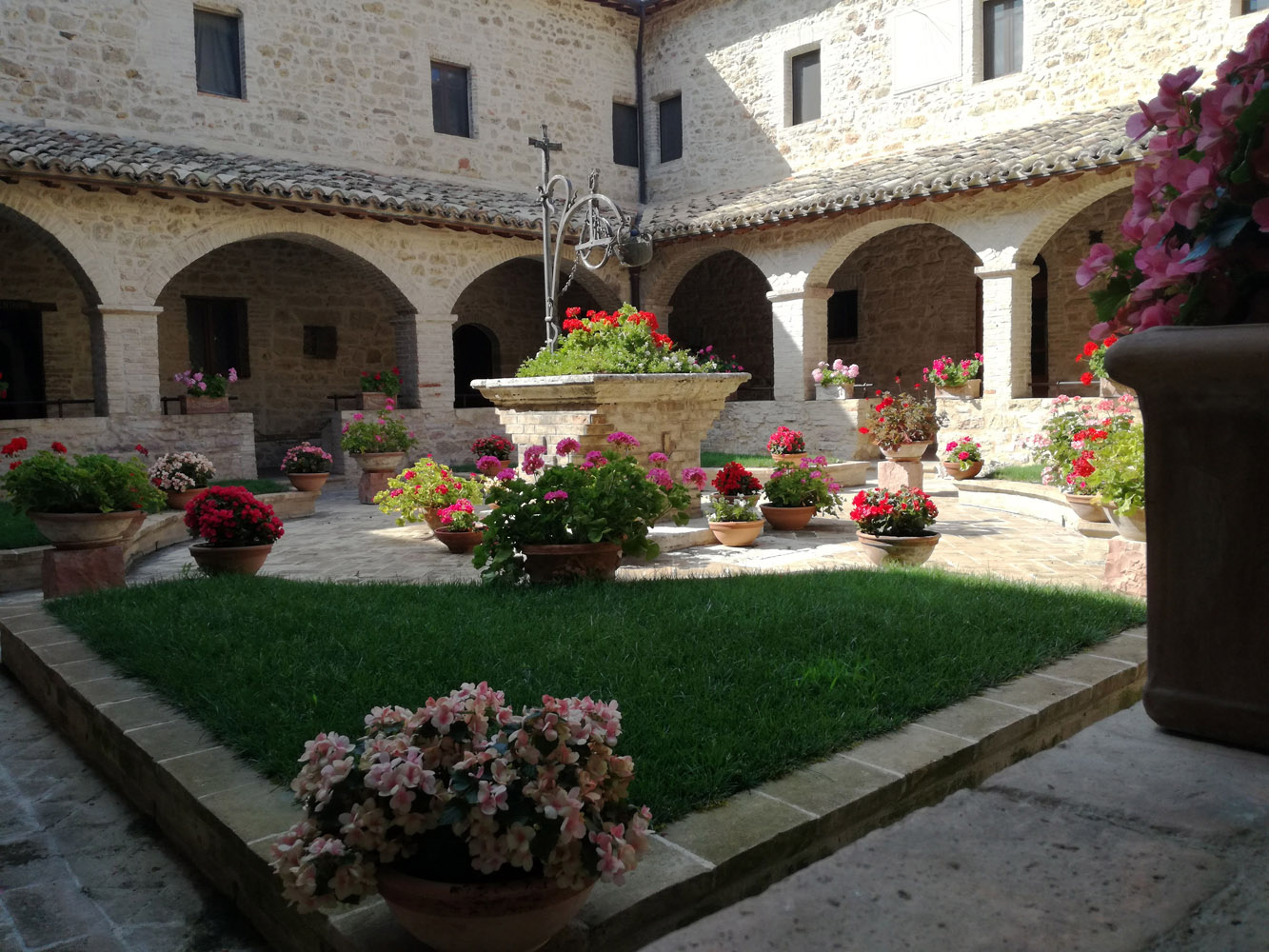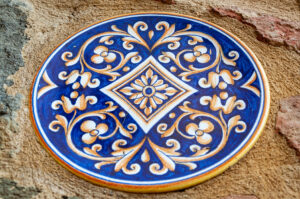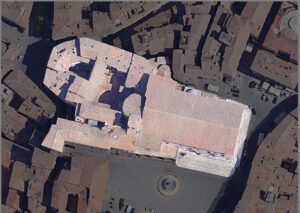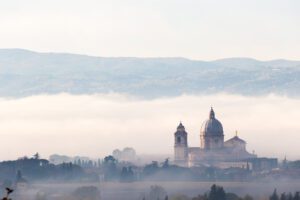Saint Damian: Saint Francis’ Building Site
In the Assisi plain and among the olive trees of the countryside, there is a place much beloved with reference to the Franciscan origins: the Shrine of Saint Damian. Here silence and peace reign, wonderfully framing the view on Nature all around. We actually know little about the origin of this structure, possibly built among the seventh and ninth centuries; and little, too, about the reasons why the church was dedicated to Saint Damian, a medical doctor and martyr whose relics had been taken to Rome in the mid-fifth century. We can anyway say for sure that the history of this very small church, then kept by an old priest, started to be in the limelight in 1205, when one day a 24-year-older called Francis stopped here to pray
A New Life
It was an adrenaline-filled and troubled time for him – metaphorically represented in the very walls of the little church, crumbling and crossed by of deep cracks, as deep as the thoughts of this young man disappointed with his military career, just coming back from a war jail, and whose attempts to work as a cloth merchant had proved a failure. “One day,” Tommaso of Celano writes,“he passes by the Church of Saint Damian, almost in pieces and abandoned by all. Driven by the Spirit, he enters to pray; bows down, suppliant and devotedly, before the Crucifix, and touched by unusual grace, finds himself different from what he was on entering.” He hugs the Crucifix, who speaks to him: “Francis, go and repair my house which, as you see, is all falling down.” From that day onward, the Saint would definitely leave any worldly comfort, and live in Saint Damian in order to repair both the church and the adjoining convent.
For the first three years, Francis would have no more company than an old priest; and would devote his time to working as a bricklayer, reading, praying, and begging. Precisely about this place he also kept himself hidden for one month from his father, Pietro di Bernardone who came and looked for his son in order to drag him back home. Here, after having let his father find him at last, Francis came back once again; meanwhile, he had been sued by Pietro himself, and had stripped himself of all possessions in public in the main square.
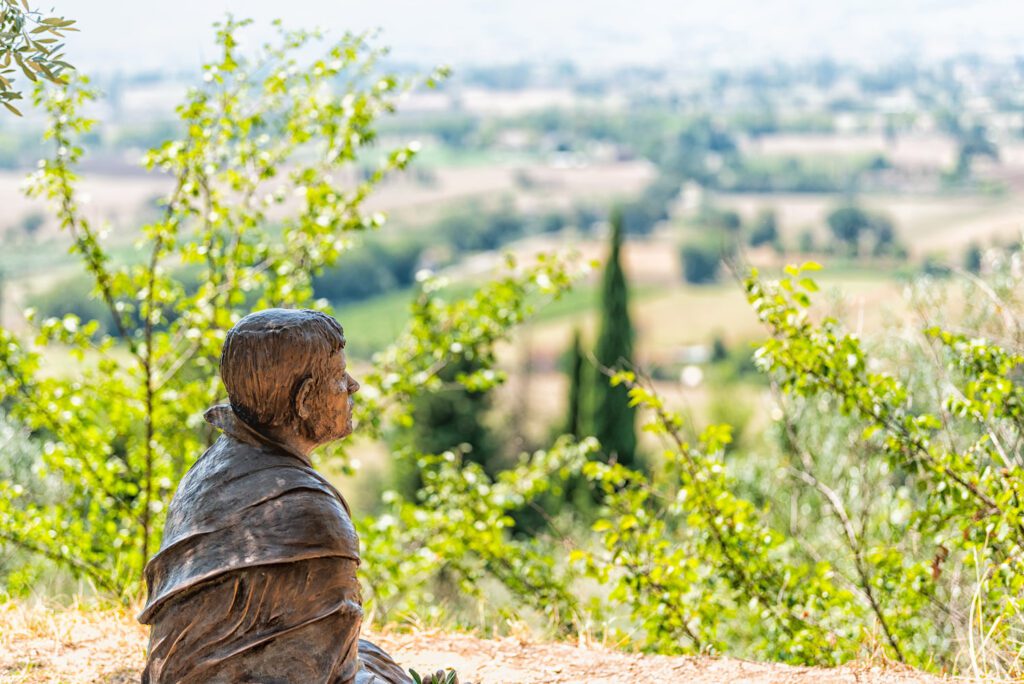
The Poor Ladies of Saint Damian
In 1211, Francis left the architectural complex – now completely restored – to the “Poor Ladies of Saint Damian,” the future Clares, namely Clare, her sister Agnes, and some more fifty young women who had followed her. Besides the female community, a small male community would also live in an adjoining building.
Francis would periodically and gladly come back and spend some time with the nuns. Especially in 1225, when he was 44 and nearly blind, quite ill, lame, as well as honored by the divine gift of stigmata, he remained here as their guest for fifty days. And precisely in that period, he dictated to the friars present the prayer in God’s praise that has become famous all over the world as the Canticle of the Creatures: it is considered the very beginning of Italian literature. They also say that, in that period, he was visited by the Lord himself, who comforted Francis and granted him that He would soon welcome him to heaven.
Saint Damian, a Place for Miracles, Saint Francis onward
The Structure
The original complex probably consisted of the area now called “infirmary of Saint Clare,” the church, and another wing behind it, a quite small one. Very old, too, was the building overlooking these; it would later be used as an oratory by Saint Clare.Francis “worked with his own hands at the rebuilding of the church, dragging the material like a beast of burden and learning the very last and lowest lessons of toil”(G. K. Chesterton); the remaining areas were built in a second phase, even during his lifetime. You will enter the church from the right side via theChapel of Saint Jerome, possibly a part of the old house of those friars who took spiritually care of the community of the Poor Clares. On the wall, a fresco with Virgin Mary Enthroned and Some Saints, the work of Tiberio di Assisi del 1517-1522.
The interiors of the Convent and the Shrine, in the originality and simplicity of their rooms, convey a rare sense of beauty. In the refectory (dining hall) ancient wood furniture has been preserved, while two frescoes of the 17th century embellish the far walls. From the vestibule, one may exit and reach the “little garden of Saint Clare,” a brief hanging terrace delimited by two walls, with a fascinating view on the underlying plain.
Inside the church, please have a look at the 14th century frescoes in the apse, and the 1504 wood choir, in which a small window opened so as to let the secluded nuns receive the Eucharist. Inside the convent, it is possible to visit the suggestive dormitory where the “poor sisters of Saint Clare” used to sleep, and she herself lay ill for no less than twenty-nine years
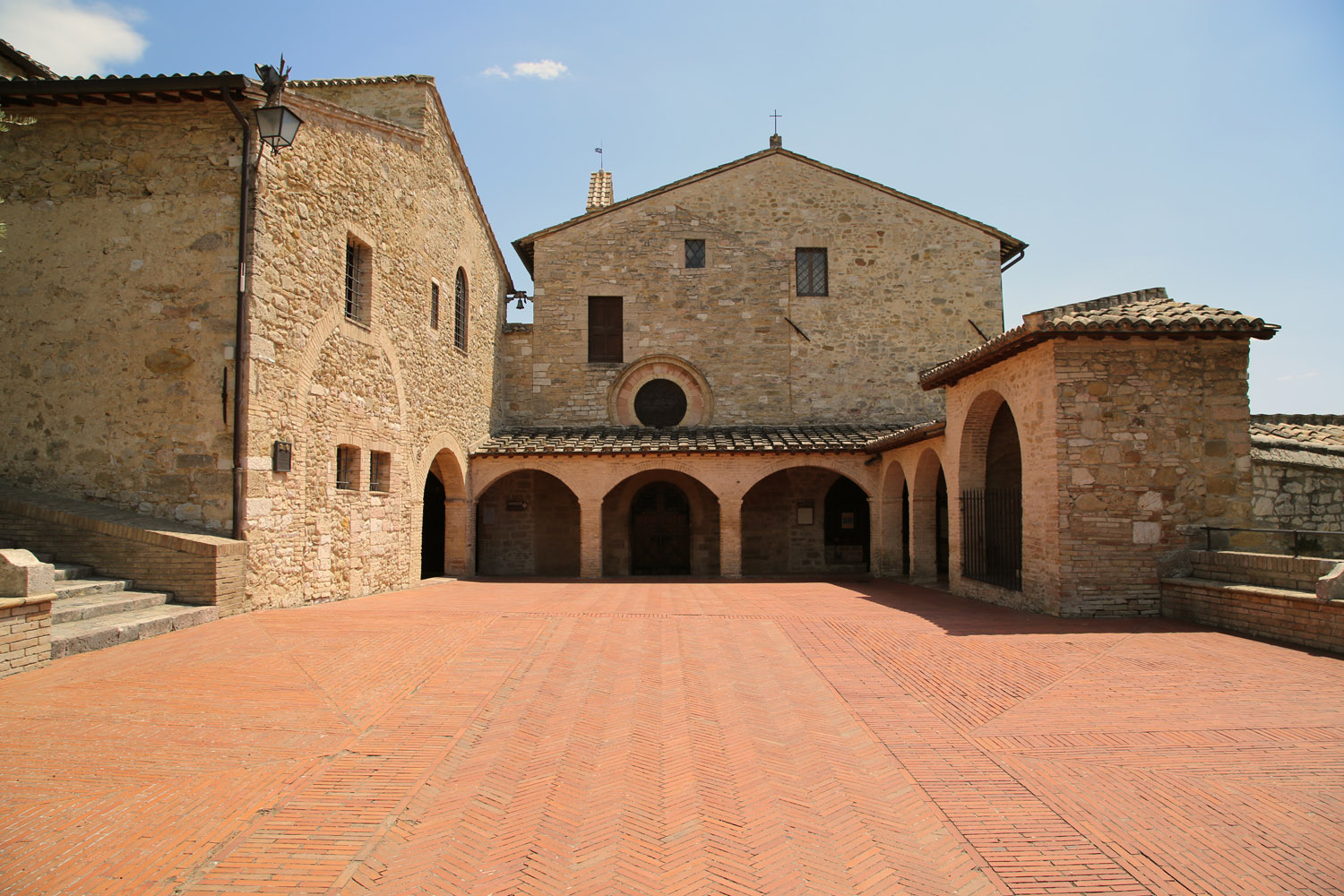
Saint Clare, a Miracle Lady Protector of Assisi
In this very dormitory the Saint, the night of Christmas 1252, could follow by miracle the Mass being celebrated in the Church of Saint Francis in Assisi. Thanks to this prodigy, she has been declared the patron saint of television. Again from this dormitory, by simply keeping the Eucharist in her hands, she had succeeded in repelling in the Saracen mercenaries who in 1240 besieged both the town and the convent.
“When she had thoroughly prostrated herself to the Lord in prayer, she said to her Christ with tears [in her eyes]. . . ‘Lord, I beg You, defend these Your servants whom I am not able to defend at this time.’ Suddenly a voice from the mercy-seat of new grace, as if of a little child, resounded in her ears: ‘I will always defend you.’ ‘My Lord, she said, “please protect this city which for Your love sustains us’ . . . They were driven away by the power of the one who was praying, departing in haste over those walls which they had scaled” (Franciscan Sources).
Assisi keeps grateful memory of this liberation by celebrating every year, on June 22, the Feast of the Vow.
Saint Damian, a Place for Franciscan Calling
After the National Unification of Italy (1861), the lay State confiscated many properties belonging to Church organizations. Currently, after many vicissitudes, Saint Damian belongs again to the Order of Friars Minor; it was given back to them by Lord Peter Kerr, Marquess of Lothian, in 1983.
The convent is now the seat of the Franciscan novitiate, a sign that the Saint’s fire can still make young hearts burn.
